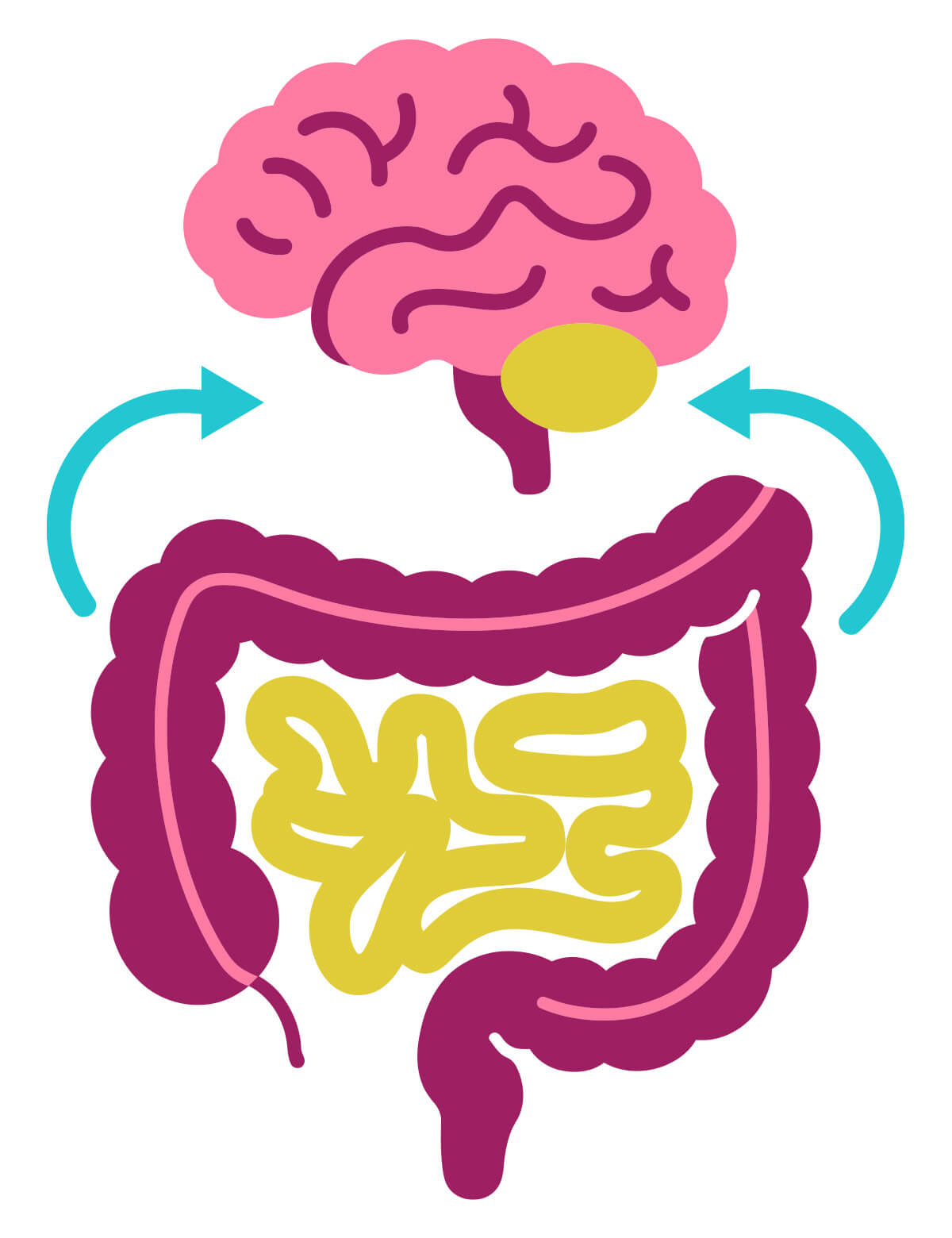Managing Attention-Deficit/Hyperactivity Disorder (ADHD) typically involves a comprehensive strategy, including therapy, medication, and behavioral approaches. While nutrition is not a treatment or cure for ADHD, emerging research suggests that specific dietary patterns may support energy stability and cognitive function, which could help complement medical care.
Key Takeaways
- Nutrition is one aspect of ADHD management and is not a substitute for medical treatment.
- Balanced meals that include sources of protein, dietary fiber, unsaturated fats, and vegetables may help maintain stable energy levels and support cognitive function.
- The gut-brain axis is an area of ongoing research. Diets rich in fiber-containing foods—such as fruits, vegetables, and whole grains—may benefit both digestive and mental health, although more studies are needed.
- Nutrition is one aspect of ADHD management and is not a substitute for medical treatment.
- Balanced meals that include sources of protein, dietary fiber, unsaturated fats, and vegetables may help maintain stable energy levels and support cognitive function.
By understanding how food choices can influence overall well-being, individuals with ADHD can use nutrition as a supportive tool for maintaining energy and focus throughout the day.
Staying focused can be tough for people with ADHD. Between school, work, family, and everyday responsibilities, distractions can pile up quickly, making it harder to stay on task. Medication and therapy are often essential parts of managing ADHD, but food choices can matter too.
What you eat can affect energy, mood, and even how clearly you think. Balanced meals and consistent eating patterns may make it easier to stay focused throughout the day. While nutrition isn’t a cure, it can be a practical tool to complement other ADHD management strategies and support overall well-being.
Understanding ADHD
Attention-Deficit/Hyperactivity Disorder (ADHD) is a neurodevelopmental condition that involves differences in brain function, particularly in areas related to executive functions such as planning, prioritization, and impulse control. Neurotransmitters like dopamine and norepinephrine directly influence these processes. When these signaling systems do not work as efficiently, it can affect a person’s ability to stay organized, regulate behavior, and maintain consistent focus in daily tasks.
While nutrition is not a treatment or cure for ADHD, certain nutrients may play a role in supporting brain function. Proteins, healthy fats, fiber, and other vitamins and minerals may support healthy brain function in people with ADHD.
It is important to note that dietary strategies should be considered part of an overall supportive lifestyle approach and are not a substitute for evidence-based medical care. ADHD is best managed with the guidance of a health professional, through a comprehensive plan that may include behavioral therapy, medication, educational accommodations, and healthy lifestyle practices.
The Gut-Brain Connection
One potential way to help manage ADHD symptoms is not through the brain, but through the gut. An area of growing scientific interest is the gut-brain axis — a communication network between your digestive system and your brain. This connection suggests that how well your gut is functioning may have an impact on how you feel and think.
One way to support the gut-brain axis is by eating more foods with fiber, like fruits, vegetables, legumes, and whole grains. The fiber in these foods helps support healthy gut bacteria, which produce compounds that may support brain health and help manage inflammation.
A diet that provides enough fiber can also help keep digestion steady and improve how nutrients are absorbed — both of which are important for maintaining stable energy throughout the day.

Nutrients That Can Help Keep You Focused
While no single food or nutrient can directly assist with managing ADHD, including a variety of nutrient-dense options in daily meals may help create the conditions for better concentration and steadier energy throughout the day.

The brain is nearly 60% fat, so the types of fat you consume matter for its structure and function. Unsaturated fats, especially monounsaturated and polyunsaturated varieties, help maintain the flexibility of cell membranes and support communication between brain cells. These fats also play a role in reducing systemic inflammation, which can affect cognitive processes.
Healthy, unsaturated fats are in more foods than you may think–of course, fatty fish and olive oil contain healthy fats, but so do nuts, seeds, legumes, and avocados. Olive oil contains 9.86 g of monounsaturated fat per tablespoon, and a 3 oz serving of salmon provides 1.5 g of omega-3 fatty acids. And avocados, contain 5 g of monounsaturated fats and 1 g of polyunsaturated fat per 50 g serving, making them a versatile addition to a balanced eating pattern. By adding more foods with healthy fats to your diet, you may be able to give your brain the fuel it needs to stay focused.
Proteins provide amino acids — the building blocks the body uses to create neurotransmitters such as dopamine and norepinephrine. These neurotransmitters are vital for regulating motivation, alertness, and attention, all of which are areas often affected with ADHD.
Consuming protein throughout the day can also contribute to steady energy levels. Unlike simple carbohydrates, which may cause rapid rises and falls in blood sugar, protein helps slow digestion and supports more consistent energy release. Lean meats, legumes, dairy, and plant-based proteins can all provide the amino acids necessary for healthy brain signaling and improved concentration.
Several micronutrients are also essential for nervous system function and cognitive health:
- Magnesium plays a role in over 300 enzymatic reactions, many of which involve neurotransmitter activity and nerve signaling.
- Zinc contributes to the regulation of dopamine and other brain chemicals associated with attention and mood.
- Iron supports oxygen delivery to the brain and is necessary for the production of neurotransmitters.
Inadequate intake of any of these minerals can impair cognitive performance and increase fatigue. Including a variety of whole foods — such as leafy greens, beans, seeds, lean meats, and fortified grains — can help ensure adequate intake of these essential nutrients.
Stable blood sugar is essential for maintaining focus and mood throughout the day. Fiber slows the digestion of carbohydrates, leading to a more gradual release of glucose into the bloodstream. This process helps prevent the sudden spikes and crashes in energy that can interfere with attention and productivity.
The majority of your fiber should come from whole foods, rather than supplements or fiber bars. Eating more fruit is one easy way to get more fiber; a cup of raspberries contains 8 g of dietary fiber, while 1 cup of blueberries contains 6.2 g of fiber. Avocados provide 3 g of dietary fiber per 50 g serving along with 6 g of healthy fats, making them uniquely valuable in supporting balanced blood sugar. Blend multiple fruits together to make a delicious smoothie, or sprinkle them on top of your salads for an extra bit of sweetness.
By promoting steady energy and reducing the likelihood of energy “crashes,” a diet that contains foods that contain fiber may help support sustained concentration in people with ADHD.
Eating in Real Life: Strategies That Make a Difference
Understanding which nutrients support focus is only the first step. The next challenge is putting that knowledge into practice. Thoughtful meal planning and consistent eating patterns can help individuals with ADHD maintain steadier energy and reduce the likelihood of mid-day crashes or intense cravings.

Breakfast is crucial for people with ADHD. A 2020 study by the Department for Health Studies found that a nutritionally dense breakfast positively impacted college students both with and without ADHD. However, the students with ADHD were more likely to experience improvements than those who didn’t have ADHD. Starting your day with the nutrients your brain needs most may reduce the aspects of ADHD that affect executive function. When your breakfast has protein, healthy fats, and fiber, you may be able to stay focused for longer.
A few great breakfast ideas for people with ADHD include:
- Avocado and cottage cheese breakfast bowl: Cottage cheese is gaining popularity for its protein content and versatility as an ingredient. It pairs beautifully with sliced avocado and soft-boiled egg, providing 23 g of protein and 8 g of dietary fiber per serving.
- Avocado smoothie parfait: For those who want breakfast on the go, these sweet parfaits can be packed into jars for easy transport. Greek yogurt is layered with a green smoothie to create an eye-catching breakfast with 11 g of protein and 14 g of fiber in every serving.
- Berry avocado baked oats: These homemade oat bars are perfect for meal prepping. Avocado, banana, oats, soy milk, and fresh berries combine into an easy-to-eat breakfast with 7 g of protein in every serving.
Eating nutritious breakfasts can make a difference in how you feel by lunchtime. Even if your mornings are hectic, make-ahead recipes and easy grab-and-go snacks can help fuel your brain all day.
Nutritious snacks can be a powerful tool for preventing fatigue or blood sugar crashes between meals. Prepare snacks ahead of time so you have healthy choices readily available when your energy is low.
Some practical snack ideas include:
- Mini fold-over avocado quesadilla pockets: These quesadillas are a good source of protein that’s easy to prepare when you’re tired or short on time. With 5 g of fiber and 13 g of protein, these can help you stay on task during long afternoon meetings.
- Feta and avocado sweet potato bites with pomegranate: For a more involved snack perfect for a weekend afternoon, these sweet potato bites are topped with mashed avocado, crumbled feta, pomegranate seeds, and pepitas.
- Pumpkin chocolate avocado bread: Sweet, soft, and a good source of fiber, this will become your go-to pumpkin bread recipe. Avocados are mashed into the batter to make this loaf even softer and more nutritious.
Balanced snacks can make it easier to focus between meals. Being proactive about preventing blood sugar drops and energy crashes can go a long way in managing ADHD =.
A balanced plate formula makes healthy eating easier to put into practice. When you have ADHD, streamlining the way you make your meals makes it easier to eat healthily when your focus is low. Combining lean protein, fiber-rich carbohydrates, healthy fats, and plenty of vegetables can help reduce cravings and distractions.
Here’s a simple way to build your plate:
- Fill half your plate with colorful vegetables for fiber, antioxidants, and slow-digesting carbohydrates.
- Reserve one-quarter for lean protein such as poultry, fish, beans, or tofu, which supply the amino acids needed for neurotransmitter production and muscle repair.
- Use one-quarter for whole grains or starchy vegetables like quinoa, brown rice, or sweet potatoes, which provide complex carbohydrates for sustained energy.
- Add a source of healthy fat, such as avocado, olive oil, nuts, or seeds, to support brain health and increase meal satisfaction.
Following this formula creates meals that work with your body instead of against it—an essential approach for anyone with ADHD.
For many people with ADHD, remembering to eat on time can be just as important as what’s on the plate. Skipping meals or waiting too long between them often leads to sudden hunger, irritability, and a sharp drop in focus. Setting reminders—on a phone, calendar, or even using a kitchen timer—can help ensure meals and snacks happen at regular intervals.
Aim to eat every three to four hours to keep energy steady. Snacks that combine protein and fiber, such as hummus with whole-grain crackers or Greek yogurt with fruit, digest more slowly and help prevent the energy crashes that make it harder to concentrate. With a bit of planning, these minor adjustments can make a noticeable difference in daily focus and mood.
How to Make Nutrition Work at Every Stage of Life
No matter what else is going on in your life, you can make time for nutrition. Feeding yourself healthy meals multiple times a day can require more planning when you have ADHD, so here are some tips on meal prepping and planning around your schedule.

Busy school days and after-school activities can make it hard for teens with ADHD to remember to eat or to choose balanced foods. Simple, portable options can help fill the gaps between meals without relying on sugary snacks or vending machine choices.
Quick ideas include:
- Whole-grain wraps with turkey and avocado, prepped the night before.
- Trail mix or granola with nuts, seeds, and a small portion of dried fruit.
- Cheese sticks or Greek yogurt cups paired with fruit.
These snacks fit easily into backpacks and can be eaten between classes, after practice, or during homework sessions to support consistent focus and energy.
College life often comes with limited kitchen access, late-night study sessions, and tight budgets. Choosing nutrient-dense foods that require little preparation helps make balanced eating more realistic.
Practical, dorm-friendly ideas include:
- Avocado and hummus on whole-grain crackers.
- Overnight oats with fruit and nut butter, made in a dorm fridge.
- Hard-boiled eggs, which you can cook in batches and store for grab-and-go protein.
Stocking a mini-fridge with affordable basics like yogurt, precut vegetables, and eggs can make it easier to eat consistently without overspending.
When your mind is darting from soccer practice to work emails and back again, figuring out what to have for dinner can feel like climbing a mountain. Planning ahead with portable, nutritious meals can reduce stress and prevent energy crashes.
Helpful strategies include:
- Packing portable lunches such as grain bowls with lean protein, vegetables, and avocado.
- Prepping snacks like apple slices with avocado or vegetable sticks with hummus for commutes.
- Setting aside time once or twice a week to prepare a few versatile staples—like roasted vegetables, grilled chicken, or cooked whole grains—that can be quickly assembled into balanced meals.
Eating well doesn’t just help you get through the day — it contributes to a healthy brain as you age. There’s no such thing as “too late” when it comes to healthy eating, and when you have ADHD, the results will be worth the effort.
While nutrition isn’t a stand-alone solution for ADHD, it can make a meaningful difference in how you feel day to day. Building balanced meals, eating on a regular schedule, and including foods with protein, fiber, and healthy fats can help steady energy and support focus. Even small steps—like topping toast with avocado or prepping a snack before a busy day—can add up over time and make healthy eating easier to stick with.
Resource Guide for Eating with ADHD
Learning to read your body’s hunger cues and prep nutritious meals ahead of time can take a little more work for people with ADHD. We’ve gathered these resources to help you create routines and lifestyle changes that can help benefit your brain.

Finding reliable nutrition resources can make it easier to turn healthy eating goals into everyday habits. Whether you’re looking for recipes, grocery shopping tips, or guidance on building balanced meals, these tools offer practical support that can fit into busy schedules.
A USDA resource that provides clear visuals and tools for building balanced meals based on the food groups. Great for meal planning and portion guidance.
A collection of avocado-based recipes designed to be simple, nutritious, and family-friendly, with ideas for snacks, breakfasts, and main dishes.
EatRight from the Academy of Nutrition and Dietetics
Offers expert-backed articles on nutrition, meal planning, and healthy lifestyle habits, tailored for different ages and needs.
American Heart Association Healthy Eating
Provides heart-healthy recipes and nutrition tips, many of which overlap with brain-supporting foods.
Harvard School of Public Health Nutrition Source
A science-based resource with in-depth articles on nutrients, dietary patterns, and their role in long-term health.
Using these resources can help make meal planning less overwhelming and more practical. They offer not just recipes, but also strategies for creating consistency in eating habits—an essential part of supporting energy and focus with ADHD.
Reliable information and supportive communities are essential for anyone living with ADHD. These resources provide education, tools, and connection points for individuals and families managing the condition.
Children and Adults with Attention-Deficit/Hyperactivity Disorder (CHADD):
A leading nonprofit organization offering education, advocacy, and support for people with ADHD and their families.
A widely trusted online resource featuring expert articles, personal stories, and strategies for managing ADHD at every age.
National Institute of Mental Health (NIMH)
Provides authoritative information on symptoms, diagnosis, and treatment options.
Offers resources and tools for parents, educators, and individuals to better understand and manage ADHD and related learning differences.
ADHD Coaches Organization (ACO)
A directory and resource hub for finding certified ADHD coaches who can provide one-on-one support.
These organizations give individuals and families access to trustworthy guidance and community support, which can make navigating ADHD challenges less isolating and more manageable.
Nutrition and ADHD management are closely tied to overall mental well-being. These resources provide evidence-based strategies for stress management, mindfulness, and general mental health support.
National Alliance on Mental Illness (NAMI)
Offers education, advocacy, and local support groups for individuals and families dealing with mental health conditions.
A U.S. government resource that connects people to mental health information, treatment options, and crisis services.
Provides articles, guided practices, and resources on mindfulness and meditation, which may help with stress and focus.
Psychology Today – Find a Therapist
A searchable directory to connect individuals with licensed mental health professionals across the country.
An app offering guided meditation, sleep support, and stress management tools in a convenient digital format.
These wellness resources highlight the importance of caring for mental health alongside nutrition and ADHD management. By combining healthy eating with stress management and professional support, individuals can take a more holistic approach to well-being.




